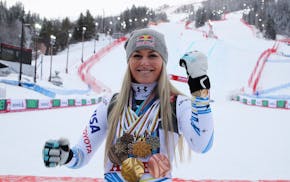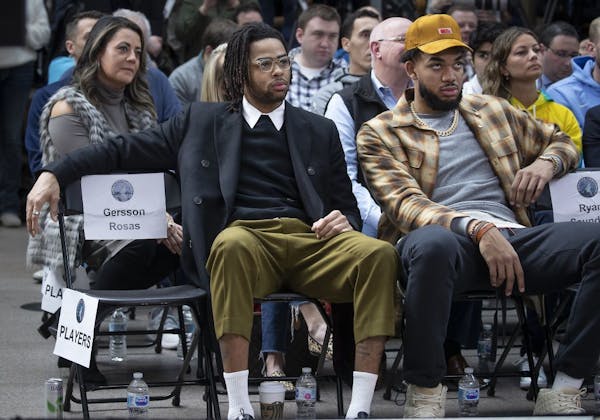The Timberwolves' dogged pursuit of D'Angelo Russell came to fruition on Thursday, when they finally landed him in a trade with the Warriors.
While there's little doubt he will fit in well running the Wolves' offense in many ways, let's take a closer look at his offensive game for areas in which he might need to adjust.
First take: Michael Rand
Russell shot a strong percentage (37.4) on three-pointers this year on an absurd 9.8 attempts per game with the Warriors. And his true shooting percentage — which takes into account free throws and the value of threes — has gradually moved up each of the past three seasons.
His biggest adjustment with the Wolves, though, will probably come from shot values. A full 30% of his shot attempts this season, per Basketball Reference, have come from either 10-16 feet or 16 feet to the three-point line. The Wolves as a team have worked to eliminate those inefficient shots this year, taking just a combined 10% of their overall attempts from those distances.
Chris Hine: But if you can manage to hit them at a high rate, are they all that inefficient? Russell is shooting 55% from 16 feet to the three-point line.
That's well above his career 42% average from that distance, so perhaps there's some regression coming along those lines.
I'm struck by the fact that he only takes 7% of shots this season around the rim. Now, some of that may be a product of how Golden State wants to play — they don't really try to discourage their players from taking midrange shots — so there may have to be a little give and take on the part of Russell and the Wolves with where they want him to shoot vs. where he feels most comfortable shooting.
Rand: The 55% mark is definitely due for a regression — I mean, NBA players on average are only making 40.6% of shots from that distance this year — which could mean his true shooting percentage is inflated. And the 7% mark is a concern as well.
But as you noted, the circumstances in Golden State are different from in Minnesota. A better comparison might be his 2018-19 season in Brooklyn — where Russell was an All-Star and flourished under the offensive tutelage of Pablo Prigioni, who now coordinates the Wolves' offense.
Russell posted a boxscore plus-minus of plus-3.4 and had a value over replacement player of 3.3, per Basketball Reference, that season. By comparison, Andrew Wiggins — the player he was traded for and will have the benefit of being compared to — has never posted a positive BPM or VORP at the end of any season.
Hine: Hold on. Let me break out my basketball encyclopedia so I can understand all these fancy stats.
One thing that was a little concerning to me coming out of Golden State yesterday was coach Steve Kerr saying Wiggins would be able to play at the faster pace the Warriors desired.
Setting aside my doubts about that happening, the Wolves want to play at a fast pace, and if Russell wasn't quite fast enough for them, will he be fast enough for the Wolves?
Rand: With three years left on Russell's contract after this one, we should have plenty or time to find out.
Hine: What could possibly go wrong?

'Really talented' duo positions Vikings to ease into Hockenson's return

Souhan: Lindsey Vonn returns to U.S. Ski Team

How will Vikings' Bynum top his latest viral celebration?

